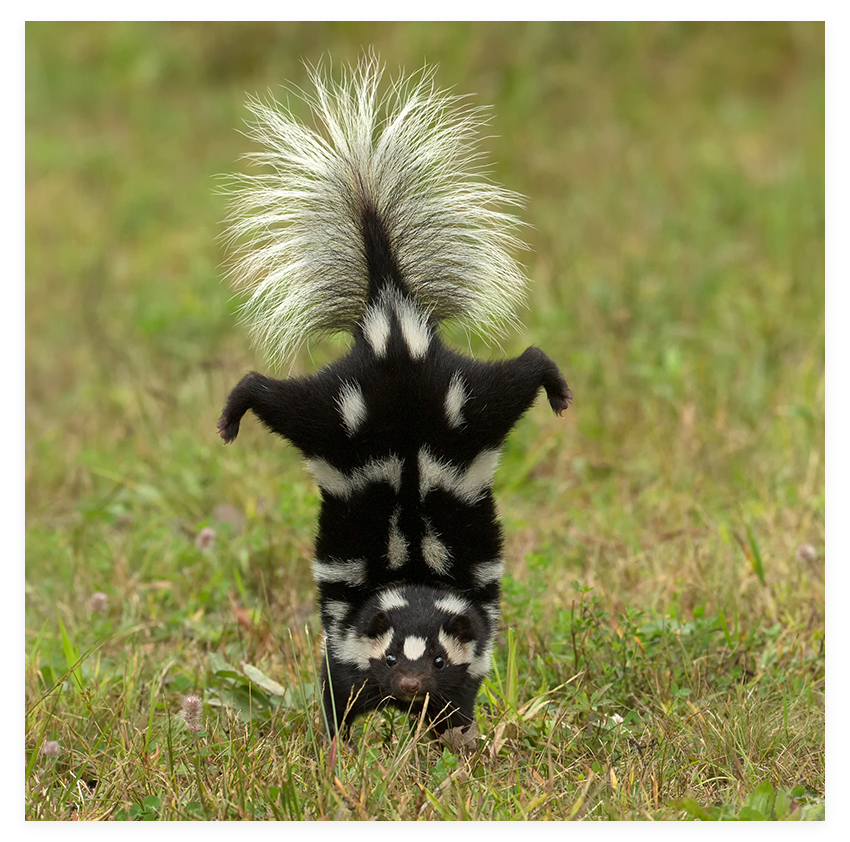Eastern Spotted Skunk (Spilogale putorius)
Eastern Spotted Skunk (Spilogale putorius): One of two native skunks, this pungent critter comes out to play in spring

- The spotted skunk or “polecat,” got that colloquial moniker from English-speaking settlers, who mistook this malodorous mammal for a ferret found in Europe.
- The size of a squirrel, their black fur features erratic spots and stripes, and a bushy tail, along with a triangular patch between their eyes.
- The spotted skunk prefers rocky outcroppings or forests with lots of shrub cover for protection. Unlike striped skunks, they are climbers and may den above ground, even in tree cavities.
- The spotted skunk is acrobatic, especially in defense mode. One way to scare off prey is by stomping its front feet. The other is unique, as it springs into a handstand, advances with its tail vertical, spreads its hind legs, and aims its bottom toward the interloper, releasing a noxious smell that can temporarily blind and cause vomiting.
- Spotted skunks are quite social, and up to eight can share a den together. A group of skunks is called a surfeit.